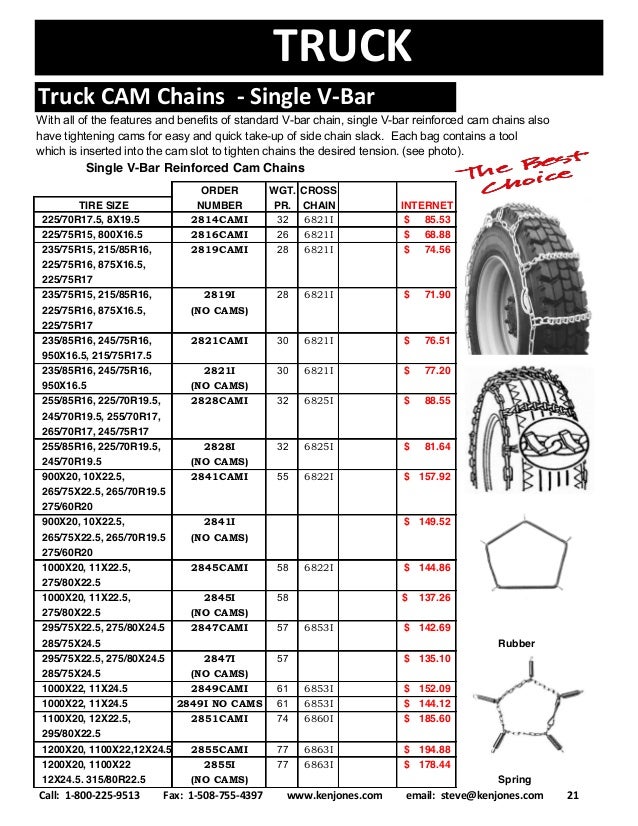May 27, 2019
Next time you’re out admiring your Toyota, take a look at the tires. Those letters and numbers you see are important indications of what you should look for when buying new tires. Here’s a quick look at tire sizes and ratings and what all those numbers mean:
A common tire size is P225/65R17. Confusing, right? Let’s break this down a bit more:
Tire type: Your tire will start with a letter explaining the tire type. A P refers to a Passenger car tire.
Tire width: The next number, such as 235mm, is the width of your tire from side wall to side wall, and determines the width of the rim your tires are mounted on.
Aspect ratio: the next number, such as 40 or 65, refers to the height of the sidewall as a percentage of the width.
Tire design: the letter R indicates that this is a Radial tire, which is designed for strength and fuel efficiency.
Tire diameter: this number, such as 17 or 19, refers to the inside diameter of the tire in inches and determines the size of wheel the tire has to be mounted on.
Understanding Tire Load Index
Just after the tire size are some more numbers, commonly 100T. The 100 is the tire’s load index, and in the case of 100, it means by itself a properly inflated tire can hold up 800 kilograms (1,764 lb.). Four tires can hold 3,200 kilograms, which for many vehicles provides plenty of capacity for holding up the vehicle and anything that might be inside.
With each increase by one, such as 100 to 101, you would increase the load capacity of the tire by 25 kg (55 lb.).
Following the load index is a capital letter. In the example above, it’s T, for 190 km/h. This is the speed rating of the tire, which can range from 160 km/h to 300 km/h or more.
The letters progress as follows:
| Load Index | Speed Rating | Tire Types |
| H | 210 km/h (130mph) | Sport sedan and coupe tires |
| L | 120 km/h (75 mph) | Off-road and light truck tires |
| M | 120 km/h (81mph) | Temporary spare tires |
| N | 140 km/h (87 mph) | |
| P | 150 km/h (93mph) | |
| Q | 160 km/h (99mph) | Studless and studdable winter tires |
| R | 170 km/h (106 mph) | H. D. light truck tires D. light truck tires |
| S | 180 km/h (112 mph) | Family sedan and van tires |
| T | 190 km/h (118 mph) | Family sedan and van tires |
| U | 200 km/h (124 mph) | |
| V | 240 km/h (149 mph) | Sports sedan, coupe and sports car tires |
| W | 270 km/h (168 mph) | Exotic sports car tires |
| Y | 300 km/h (186 mph) | |
| Z | 240+ km/h | Exotic sports car tires |
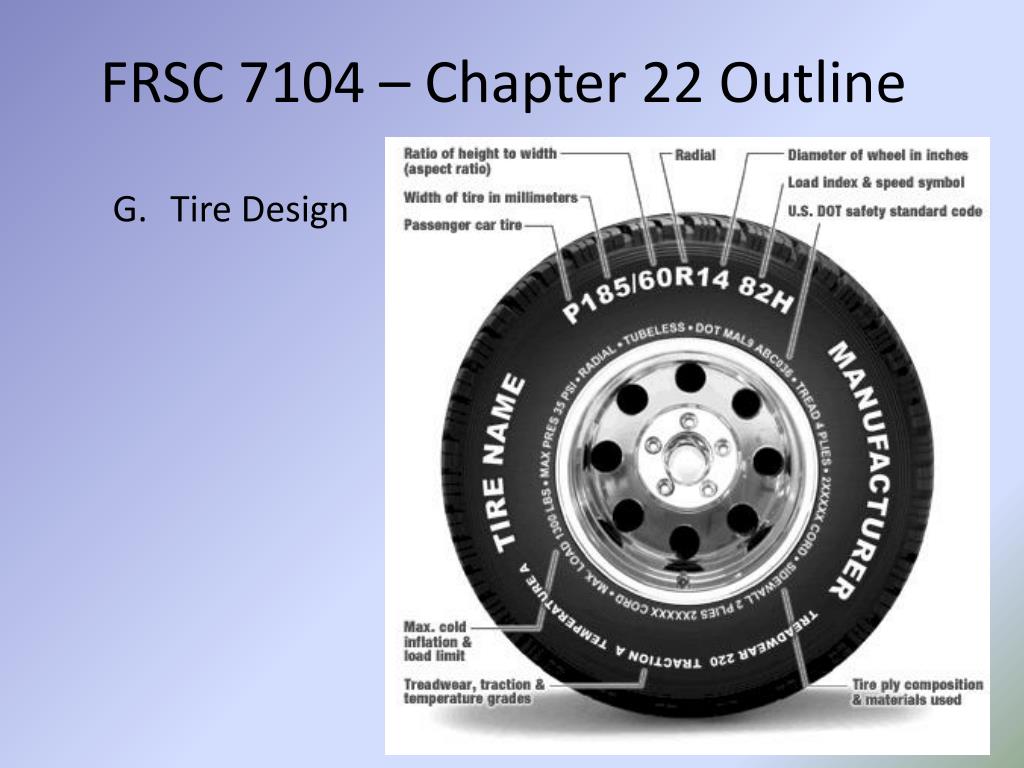 D. light truck tires
D. light truck tiresTire speed ratings R and S are typically related to other functions of the tire, such as winter or off-road tires.
It’s important to remember these are the speeds, under optimal conditions, at which the tires will not tear themselves apart. They are not guarantees you can safely drive at those speeds. P-rated tires are rare.
When It Was BuiltAnother number on the sidewall will tell you when the tire was manufactured. For example, if this number reads 4618, it means the tire was made during the 46th week of 2018.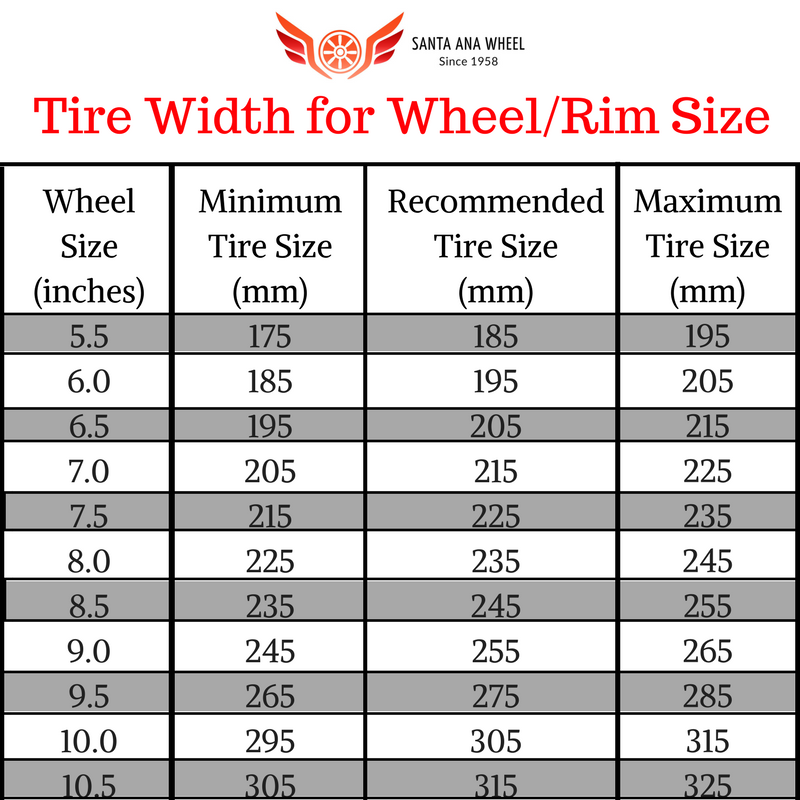
M&S, for mud and snow, is a misleading symbol, as it doesn’t really indicate a tire suitable for use as a winter tire. The mountain and snowflake symbols guarantee the tire met certain minimum standards for cold-weather traction, performance in snow and on ice.
Most all-season tires come with the M&S symbol, while only true winter tires come with the mountain and snowflake. Winter tires are designed to perform optimally in both snowy conditions and cold temperatures, providing the performance and safety you expect. In fact, they’re recommended as soon as average daily temperatures drop below 7 degrees Celsius. For passenger vehicles, they are legally required on some B.C. highways after Oct. 1 and in Quebec between Dec. 15 and Mar. 15
Max PSIThis is an important one to point out. If a tire says Max PSI 44lbs, that’s not an indication you should inflate the tire to that number.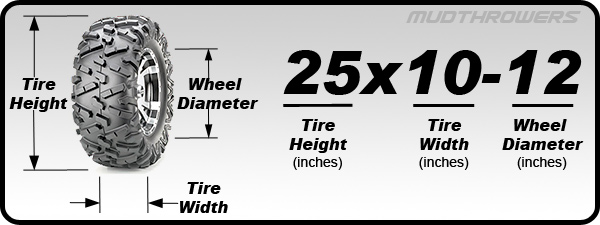 It’s merely the most the tire is rated to withstand. When inflating your tires, go only by the numbers in your owner’s manual, which have been carefully calculated by the vehicle’s engineers.
It’s merely the most the tire is rated to withstand. When inflating your tires, go only by the numbers in your owner’s manual, which have been carefully calculated by the vehicle’s engineers.
Obviously, tires have to fit on the wheels, so the width is critical, but less obvious is the effect on various systems in your Toyota. If your car is specified to ride on P225/65R17 tires, changing to P225/55R17 — which has smaller sidewalls — will throw off your speedometer, which was calibrated based on the diameter of the P225/65R17 tires. It’s also important to choose tires with similar or higher load and speed ratings to avoid the risk of a blowout due to under-rated tires.
Finally, getting the speed rating right is important because tires are under extreme stress when rotating at high speeds. The combination of centripetal force (the force inline with the tire’s rotation) and centrifugal force (the force acting outward from the centre of the wheel) is an important consideration for an engineer who is selecting tire speed ratings.
Shopping for new tires can seem to bring about a bewildering array of numbers and ratings and symbols, but understanding the basics and consulting with your certified Toyota technician will help clear up all confusion.
As the only interface between your Toyota and the road, tires are arguably the most critical wear item on any vehicle. Since each tire’s contact patch on the road is about the size of your hand, getting the right tire for the job is important.
Learn More: Visit Toyota's Tire Centre Here
Check Out What's New
Installing the right tires on your vehicle is essential to the overall performance and safety of your vehicle. Your tire choice should reflect the conditions in which you drive and your preferences for vehicle response and handling. To make the most informed decision, though, you must understand how to read tire size when it's time to buy tires.
Thankfully, determining the correct tire size for your vehicle is relatively simple. All the information you need is immediately available either in your owner's manual or somewhere on the vehicle itself. Already know how to read tire size numbers? Skip the explanation and find the right Bridgestone tire for your vehicle online or by visiting a Bridgestone tire dealer near you.
All the information you need is immediately available either in your owner's manual or somewhere on the vehicle itself. Already know how to read tire size numbers? Skip the explanation and find the right Bridgestone tire for your vehicle online or by visiting a Bridgestone tire dealer near you.
While actual, physical measurements like width and diameter are factors in finding the right tire size, there are additional details to consider. Knowing how to read car tire sizes also means understanding terms like load index and speed rating that affect your vehicle's overall capabilities.
No matter what vehicle you drive, finding the manufacturer-recommended tire size should be easy. The best place to start looking is the owner's manual.
Don't worry if you can't locate the manual; you may also find a tire fit guide in these locations:
You can also find tire size data on the sidewall of your current tires (assuming they're the proper size).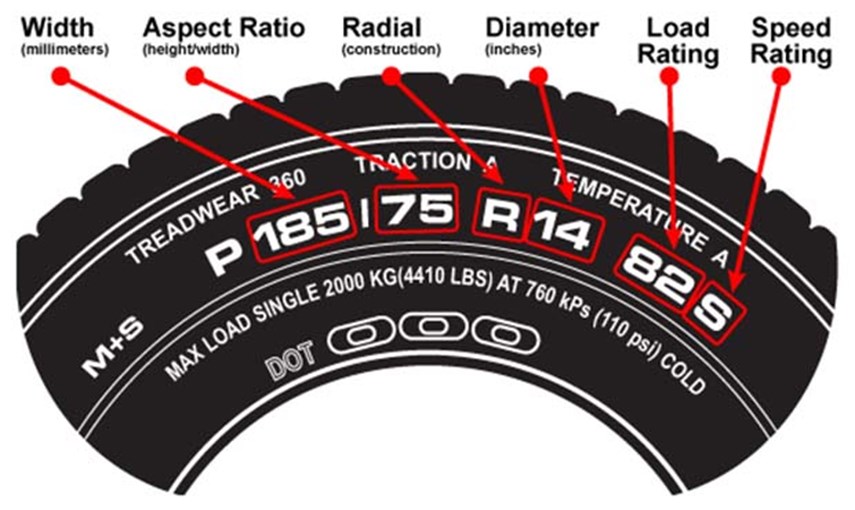 However, no matter where you find your tire size, you will have to decipher a sequence of numbers and letters. Don't worry if it looks confusing at first — every letter and number has a straightforward meaning. Let's break down how to read car tire size.
However, no matter where you find your tire size, you will have to decipher a sequence of numbers and letters. Don't worry if it looks confusing at first — every letter and number has a straightforward meaning. Let's break down how to read car tire size.
Let's take a look at what each number or letter stands for, one by one, in the order they appear in your tire size data. We'll be using this tire size as an example: P225/70R16 91S.
For most vehicles, you'll see the letter "P" before the number sequence begins: P225/70R16 91S. The "P" is short for "P-metric," which is a designation by the Tire and Rim Association for a "passenger car" tire type. A "P" signifies the tire was designed to primarily be used on passenger vehicles, which can include cars, minivans, SUV's and other light-duty pickup trucks.
If you see "LT" instead of "P," it's because you need "light truck" tires – "LT" is short for "LT-metric," which is a designation by the Tire and Rim Association for a "light truck" type tire.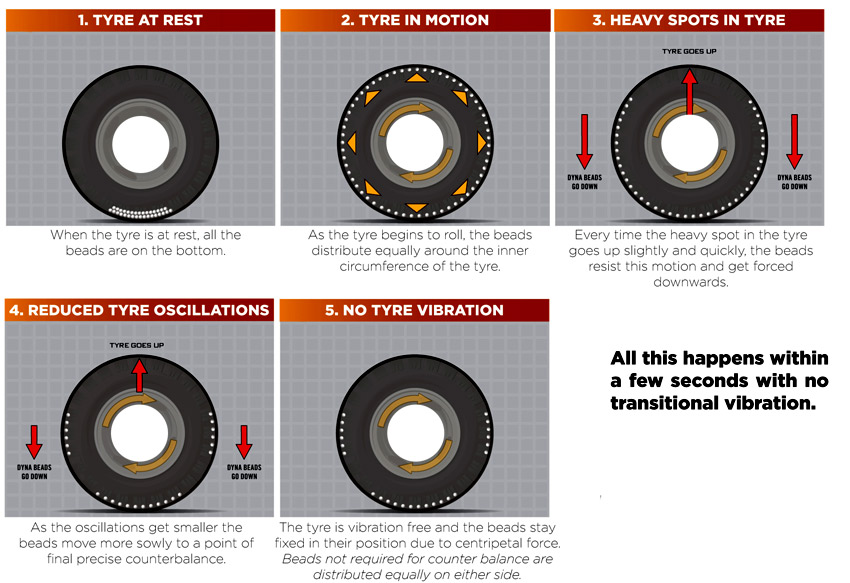 Light truck tires are designed to be used on vehicles capable of carrying heavy cargo or pulling trailers.
Light truck tires are designed to be used on vehicles capable of carrying heavy cargo or pulling trailers.
Similarly, "T" stands for "temporary" and is for your spare tire. If you see "ST," that means "special trailer." A special trailer tire is never installed on the drive or steer wheels. It's only intended for use on trailer axles.
The first number to appear in your tire size information is the width, in millimeters, of the correct tires for your vehicle: P225/70R16 91S.
Tire width always refers to the measurement from one sidewall to another. Thus, a tire with the measurement "P225" is for a passenger vehicle and has a nominal width of 225 millimeters.
After the slash mark, the next number you see is for the tire's aspect ratio, which essentially tells you how tall your tire's profile is: P225/70R16 91S. Aspect ratios are delivered in percentages. Tire makers calculate the aspect ratio by dividing a tire's sidewall height by its width. If a tire has an aspect ratio of 70, it means the tire's height is 70% of its width.
If a tire has an aspect ratio of 70, it means the tire's height is 70% of its width.
Lower aspect ratio tires, such as a 60 series, generally offer vehicle handling performance advantages over higher aspect ratio tires, such as a 75 series.
After the aspect ratio comes a letter to indicate the tire's construction: P225/70R16 91S. "R" refers to the internal structure of your tire and gives you a general idea of its stability.
There are two types of construction that you may see on the sidewall of a tire
"Bias-ply" tires were used on automobiles and light trucks until the '70s," reports the classic car site, Hemmings. But radial tires represent the vast majority of tires on the road in the United States today. In fact, you will almost always see the letter "R" on tires as radial tires have been the industry standard for over 40 years. Radial construction means the tire's internal ply cords are oriented in a radial direction (at 90 degrees to the centerline of the tread).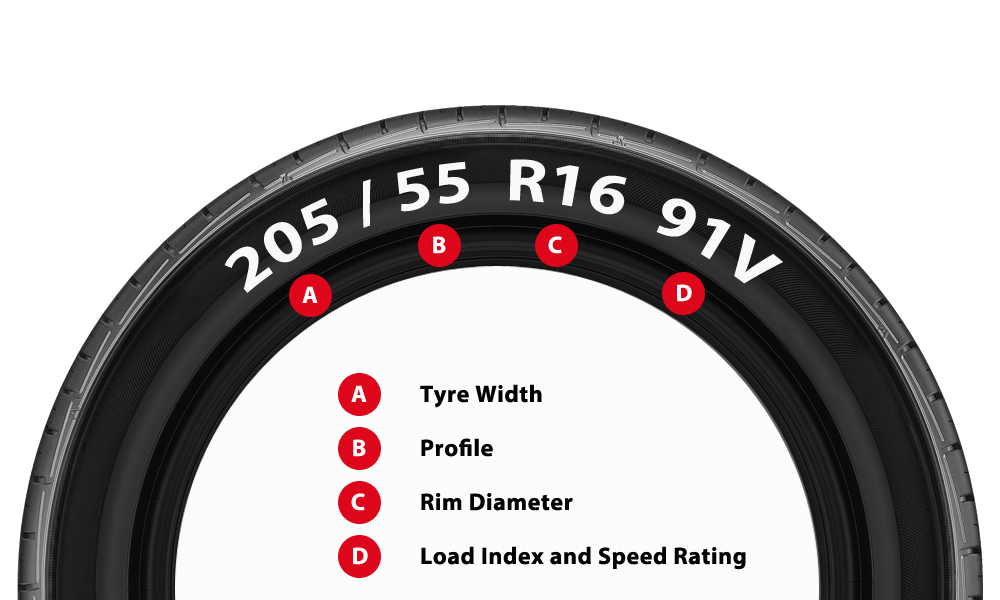
The next number is the wheel’s diameter. For example, a tire with the P225/70R16 91S would fit a rim with a 16-inch diameter.
Take note: if you decide to change your rims' size, you will also need to get new tires that are compatible with the change in size. Tires designed to fit a 16-inch wheel diameter will not stretch to fit on new 18-inch rims.
View Other Common Diameter Sizes:
14-Inch Diameter Tires
15-Inch Diameter Tires
17-Inch Diameter Tires
18-Inch Diameter Tires
19-Inch Diameter Tires
20-Inch Diameter Tires
21-Inch Diameter Tires
22-Inch Diameter Tires
The next figure needed to read tire size numbers is your tire's load index. The load index tells us how much weight, in pounds, the tire can support when fully inflated: P225/70R16 91S.
It is called the load "index" because the figure doesn't tell us the precise number of pounds the tire can support, at least not by itself.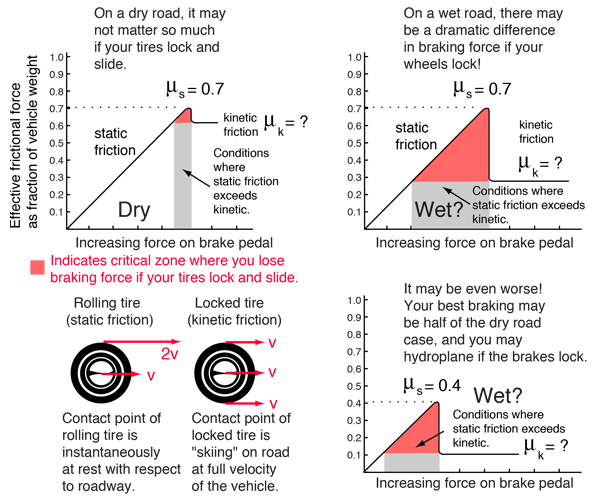 Instead, the number corresponds to a specific load capacity listed in an index. Beginning with one and ending with 150, numbers in the load index represent carrying capacities of 99 to 7385 lbs.
Instead, the number corresponds to a specific load capacity listed in an index. Beginning with one and ending with 150, numbers in the load index represent carrying capacities of 99 to 7385 lbs.
Additionally, you may not find this number present on all tires. This is because the load index is not required by law to be printed on tires. If there is no load index measurement on your tires, check the owner's manual or contact your local Bridgestone tire dealer for more information.
The final figure in a tire size sequence is the speed rating indicated by a letter: P225/70R16 91S. Just as your load index number corresponds to a particular load, your speed rating letter corresponds to a specific speed capability based on a standardized laboratory test.
For example, a tire with a speed rating "S" is rated for up to 112 mph, while a tire rated "R" is up to 106 mph. Remember that this isn't a recommended cruising speed, but rather the maximum speed that tire type can withstand.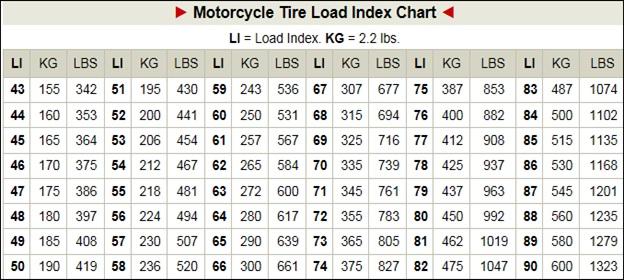 Of course, you should always follow legal speed limits on roadways.
Of course, you should always follow legal speed limits on roadways.
Here are the most common letters for speed ratings and their corresponding maximum speeds:
Tires with higher speed ratings tend to offer increased handling performance. Replacement tires must have the same or higher speed rating to maintain vehicle speed capability. If a vehicle has tires with different speed ratings, the speed rating of the "slowest" tire dictates the vehicle's top speed.
Like the load index, the speed rating is not required by law to be listed on all tires. If your tires do not have the speed rating listed, your owner's manual will have the relevant information for your model's stock tire type.
You may find "M+S" or "M/S" after the main tire size sequence on some tires. This indicates that the tire has some capacity to handle snow and mud conditions. This indication is common on most radial or "R" type tires.
This indicates that the tire has some capacity to handle snow and mud conditions. This indication is common on most radial or "R" type tires.
You may notice another set of letters and numbers on your tire's sidewall beginning with "DOT." This is not an indication of tire size, but rather that the tire complies with Federal Motor Vehicle Safety Standards. The "DOT" stands for Department of Transportation and is followed by the tire identification number.
The first two letters or numbers after DOT refer to the manufacturing plant where the tire was produced and the last four numbers indicate the week and year the tire was made. The numbers 4318, for instance, indicate that the tire was manufactured during the 43rd week of 2018.
While it's certainly possible to upgrade your tires' size, it's usually best to stick to your manufacturer-recommended tire size for optimal performance. Increasing the size of your tires may give your car more ground clearance, but it may also affect handling, drivetrain performance and fuel economy.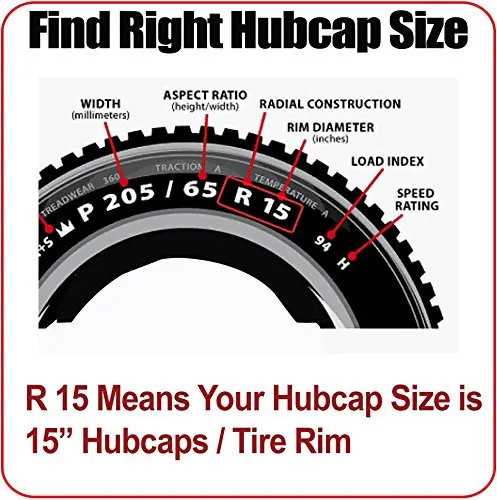 Keep in mind the changes to key figures mentioned above, such as load index and speed rating, and how they may affect your vehicle's capabilities if you decide to increase tire size.
Keep in mind the changes to key figures mentioned above, such as load index and speed rating, and how they may affect your vehicle's capabilities if you decide to increase tire size.
Once you know how to read the numbers on tires, you can explore tires by size and narrow down your tire options quickly. Compare tire sizes online or visit a Bridgestone tire dealer near you for help.
Canada tires are a very important part of a car because they are the only part of the car that comes into contact with the road. Every movement of the driver, whether it is turning the steering wheel or braking, is transmitted to the road through the wheels. So your car's performance will most likely be determined by the tires you ride.
There are many tire factors that affect the behavior of a car. For this reason, the price and appearance of a tire should not be your top priority when buying tires from TirePlanet. Below is a list of additional factors to consider when buying wheels. nine0003
Below is a list of additional factors to consider when buying wheels. nine0003
Choosing the wrong type and size of tires in Canada can really hurt you. That is why it is important to know the size and type of wheels your car needs. You can find this information on the side of your current tires or in your owner's manual. You can search the web by filling in your car model, year and make. Tire type and size are also listed in the owner's manual. nine0003
Another important characteristic is the speed rating. The higher the speed index, the more heat the tire can dissipate. If you don't drive long distances, choose wheels with a lower speed rating. Don't forget to check the load rating. This tells you the load capacity of a particular tire and is written on the side of the tire. Make sure you buy one with a high load capacity.
Once you have determined that your tires are wearing out and need replacing, the next thing to think about is where to buy a replacement. There are many options; You can purchase them from your local retailer or online stores. nine0003
There are many options; You can purchase them from your local retailer or online stores. nine0003
Drivers are encouraged to purchase Canada wheels from local retailers because there will be no additional shipping charges. Their prices are also reasonable and they advise their customers on the best tires to buy. If you choose online stores, learn more about the store. Read their reviews and find out the total cost of the purchase.
The roads you drive on matter a lot. Tires for driving on asphalt are different from those that drive on city roads. Considering what you need from a tire and what you want tires to do for you, don't oversell or buy more than you need. Wheels will cost you for no reason.
When buying tires from Canada, you most likely want to save some money on the purchase and operation of wheels. One thing you should know before you go shopping for tires in Canada is that tires come with different fuel consumption (many car owners may not be aware of this as the correlation between tires and fuel consumption is not so obvious). nine0003
One thing you should know before you go shopping for tires in Canada is that tires come with different fuel consumption (many car owners may not be aware of this as the correlation between tires and fuel consumption is not so obvious). nine0003
Choose good quality but also consider low fuel consumption. Also note that most tire manufacturers do not prioritize fuel economy. The best economy tires are the original tires that your car comes with. Choosing economical tires means long-term fuel savings for your vehicle.
There are many reasons why you might want to consider using used tires. The most obvious of these is the price factor. Used tires online Canada are cheaper than new tires and they have their advantages and disadvantages. Most drivers buy new tires to make them last longer and better. If you decide to buy used tires, factors such as tread wear and year of manufacture must be taken into account. nine0003
As tires age, their expiration date approaches and it can be dangerous to drive on tires near the expiration date.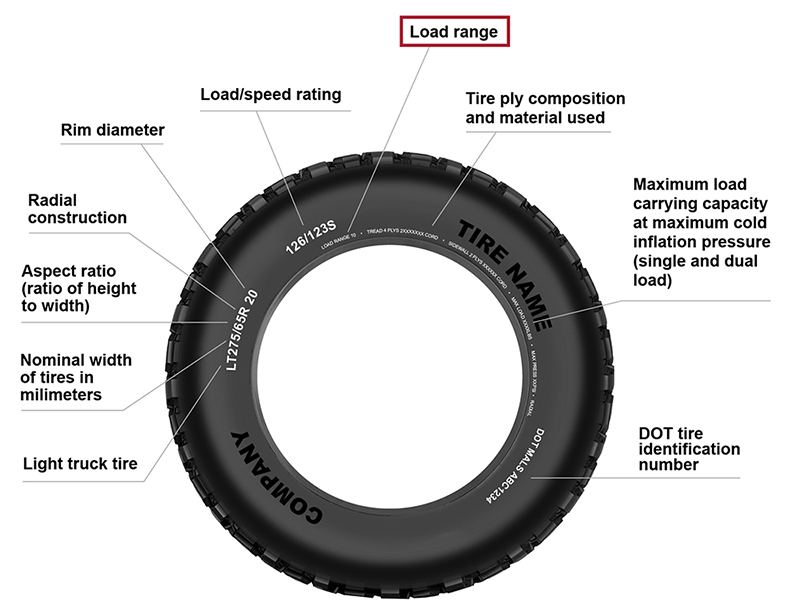 Choose used tires with a recent date of manufacture. They should also be cheaper than new tyres, as that's the main reason you choose them anyway. Because if they cost the same, what's the point of buying used?
Choose used tires with a recent date of manufacture. They should also be cheaper than new tyres, as that's the main reason you choose them anyway. Because if they cost the same, what's the point of buying used?
Tire price Canada is one of the most important factors to consider. In terms of pricing, tires fall into three categories: premium, mid-range and budget. Since Canada's premium tires are the result of months of research and development, they cost more. In addition, their quality, tread, materials and performance are undeniable. nine0003
Mid-price tires can still perform comparable, but material quality is not as good as premium tires. Finally, while budget tires may offer a better price, you may have to sacrifice overall tire life.
It is extremely important to check the tire code printed on the sidewall of your Canadian tire before purchasing tires. Weight and speed, rim diameter and aspect ratio are defined by this code.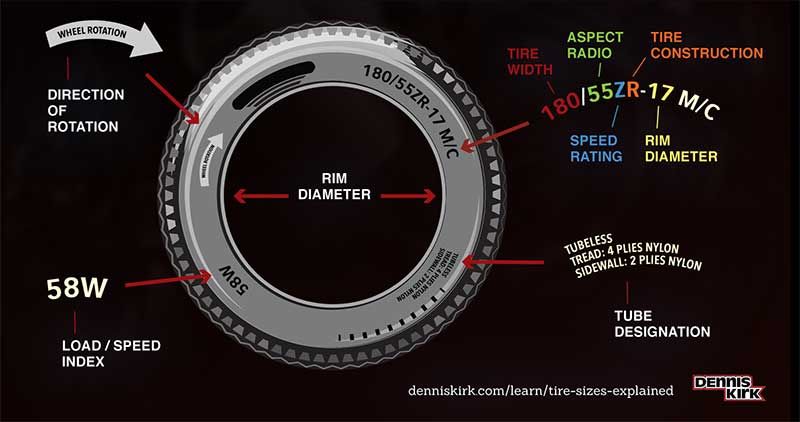 Understanding this code will enable you to make more informed decisions when purchasing new tires in Canada. nine0003
Understanding this code will enable you to make more informed decisions when purchasing new tires in Canada. nine0003
The first three digits indicate the distance between the sidewalls (in millimeters). Then the ratio of height to weight of the tire is indicated by a two-digit number. After these numbers, you will often see the letter "R", which indicates a radical design, followed by a number indicating the diameter of the wheel. In addition, load index and tire speed index are also available.
Reading customer reviews before buying is easier than ever, and Canada tires are no exception. While it may not be as exciting as reading other reviews, doing some research before buying tires can help you get exactly what you want. nine0003
Learn more about how the tire can help save fuel, how long it lasts for other people, how much noise it makes, how well it handles, and if there are any known issues or perceived feedback.
 com
com Heavy weather tires are essential for car owners who live in areas with harsh weather conditions. Winter tires are designed to provide increased grip when driving on snowy and slippery roads. As a result, car owners should consider investing in weather-matched wheels to improve stability, grip and performance. nine0003
When evaluating tire prices, remember to consider the manufacturer's warranty. Most tires in Canada are covered by some form of manufacturer's warranty; make sure you know what your warranty covers and what doesn't. Surprisingly little coverage is offered by many warranties. Worth paying a little more for a tire with a good warranty if you can find one.
Car tires need to be serviced regularly. The best brands require a lot of attention because maintaining a high level over a long period of time requires caution. Consult a garage to check your tires regularly in Canada. You should also make it a habit to check your tire pressure. In this case, the convenience and cost of maintenance are important considerations. nine0003
You should also make it a habit to check your tire pressure. In this case, the convenience and cost of maintenance are important considerations. nine0003
When buying tires in Canada, remember that your safety is paramount. While price will play a significant role in your final decision, always do your research to find the best deal.
From this set of letters and numbers, you can extract the entire amount of information - from the brand name and manufacturer to the release date and lot number. Part of the information encrypted in the DOT code is not even contained in the tire markings. Therefore, the DOT code on tires is useful for both the retailer and the buyer. nine0003
The US Department of Transportation came up with this encoding. Indeed, according to the laws of this country, until 2003, the US Department of Transportation was responsible not only for roads, but also for safety on them. And the characteristics of car tires affect road safety a little more than completely. To verify this, try driving on the road with tires of the wrong season or worn out tread. nine0003
And the characteristics of car tires affect road safety a little more than completely. To verify this, try driving on the road with tires of the wrong season or worn out tread. nine0003
Under the pressure of the aftermath of the 9/11 tragedy, the US Department of Transportation lost its right to oversee road safety, but the tradition of marking car tires with a special code developed by the Department of Transportation has survived to this day. Therefore, now we can take any tire, read and decipher its DOT code, and find out all the ins and outs of this product.
Before deciphering the code on tires, you need to know where it is located. In most cases, the DOT code is applied to the side, placing it above the landing board. nine0003
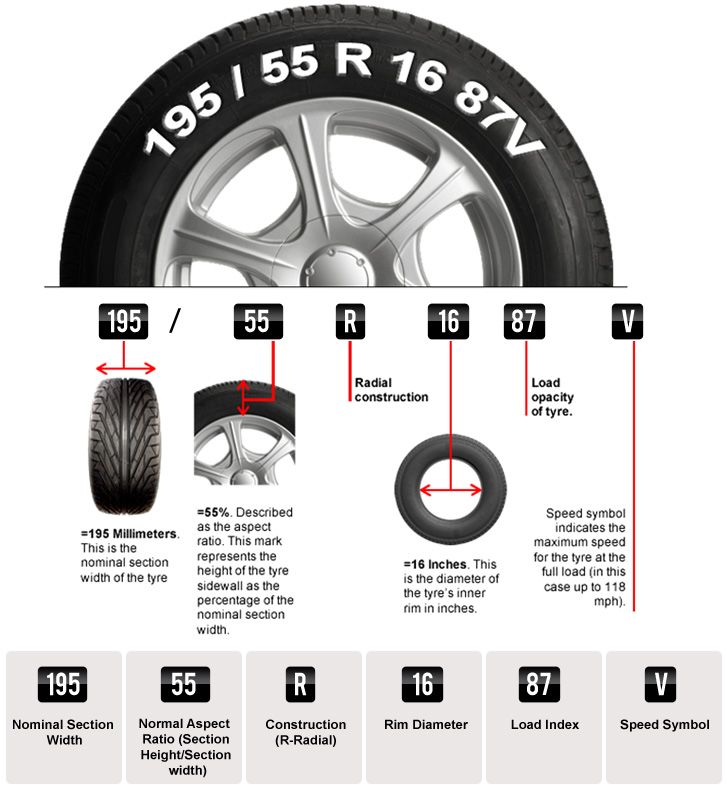
For example, the initial marking 4B in the DOT number of a Goodyear tire 4B9Z 747R 3909 indicates the plant and country of manufacture. If we decipher this information, we will see that the tire was made at the Goodyear Canada, Inc. plant, which is located in the city of Napanee (Ontario). The next two characters - 9Z - indicate that the model belongs to the tire segment for passenger cars of a particular brand. The second block of four characters - 747R - indicates the size, repeating the markings on the sides (175 / 65R14). The last four characters allow you to decipher the designations of the week (39) and year (2009) of release.
As you can see, the DOT number 4B9Z 747R 3909 really contains all the information about a particular Goodyear model. But in order to decipher it, you need to know the "inner kitchen" of the manufacturer or be able to use special applications.
Winter Drive protection
Tires Goodyear UltraGrip Arctic 2 SUV
Winter Drive Protection Sound Comfort
Rating:
4. 5
5
Tires Goodyear UltraGrip Ice 2
Tires Goodyear UltraGrip Performance+ SUV
Tires Goodyear UltraGrip Arctic 2
Winter Drive Protection Run On Flat Sound Comfort
Tires Goodyear UltraGrip Performance+
To decipher the DOT coding you will have to find tables of brand and factory designations, as well as find out the internal codes of the tire model range. This is not the most common information - manufacturers are in no hurry to share their secrets, which include the internal encoding of models. nine0003
This is not the most common information - manufacturers are in no hurry to share their secrets, which include the internal encoding of models. nine0003
If you want to decrypt DOT code effortlessly, download it to your phone or find a decoding application on the Internet. To do this, just drive in the search line "decrypt the encoding" and follow the link.
The decoding process using the application does not take long. You take a photo of the DOT or enter all the characters following this abbreviation into the appropriate fields. If there are no errors in the encoding, the program will give you the name of the manufacturer, the name of the plant, the release date and other information. Otherwise, the program will report that it is impossible to decipher the marking, referring to some reason. nine0003
DOT code decryption is over, but why did we try? Is this information useful? Of course, yes. First, we have learned to distinguish an original product from a fake. For example, Goodyear puts DOT on American, Canadian, German, Malaysian and Thai tires. Therefore, as the first two characters, buyers of such tires see: MD, MJ, M6, MB, MC, MK (USA), ND (Germany), PC, 4B, PD (Canada), T8 (Malaysia), NY (Thailand), NP (Mexico). Knowing these codes, you can decipher the country of manufacture without a reference book. And if under the name of the Goodyear brand there is a DOT number different from those indicated, such a tire is a fake. nine0003
For example, Goodyear puts DOT on American, Canadian, German, Malaysian and Thai tires. Therefore, as the first two characters, buyers of such tires see: MD, MJ, M6, MB, MC, MK (USA), ND (Germany), PC, 4B, PD (Canada), T8 (Malaysia), NY (Thailand), NP (Mexico). Knowing these codes, you can decipher the country of manufacture without a reference book. And if under the name of the Goodyear brand there is a DOT number different from those indicated, such a tire is a fake. nine0003
Secondly, we were able to determine the exact age of the tire. To do this, just look at the last four digits and decipher them, acting according to the following principle:
That is, the number 1014 means that this model was released in the 10th week (in March) of 2014. And behind the cipher 3909 is the 39th week (October) of 2009. Knowing this trick, you will not buy expired wheels under any circumstances.